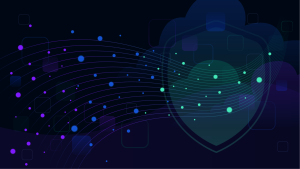As cyberattacks continue to grow both in number and sophistication, government agencies are struggling to keep up with the ever-evolving threat landscape. This is further exacerbated by the fact that a significant portion of their IT budgets are allocated to maintaining outdated legacy systems. However, emerging technologies such as artificial intelligence (AI) and observability are proving instrumental in addressing this issue. By combining AI and observability, government agencies can create more intelligent and responsive systems that are better equipped to tackle the challenges of today and tomorrow.
Rules-based security in an era of rapid change
A fundamental limitation is at the heart of most traditional security solutions: Many are rules-based, making them well-suited for defending against anticipated risks, but not new and unexpected ones. The traditional approach is wholly inadequate for modern systems.
Today’s applications are cloud-native, microservices-based, and extend across both the cloud and on-premises servers. Moreover, they’re constantly changing, scaling up and down as needs change. The scale, complexity, and dynamism of these systems are why so many federal agencies struggle to develop full visibility into them.
The complexity of modern systems, combined with the near-constant threat of new attacks, poses a threat too severe to ignore. Federal agencies without a full understanding of their systems are unable to preempt potential attacks and respond to actual ones. Simply put: Organizations don’t know what they don’t know. They don’t know where vulnerabilities start, what problems exist, how to resolve them, or how to prevent them from happening in the future.
The convergence of AI and observability
This brings us to causal AI and observability — two technologies that, when combined, enable federal agencies to proactively identify potential vulnerabilities and respond to threats in real time.
First, let’s discuss observability. This is the ability to see into and measure the current state of a system based on the data it generates, which typically includes logs, metrics, traces, end-user experiences, and context across cloud, multi-cloud, and hybrid environments. In complex, distributed cloud-native environments, observability is powerful, as it shows teams exactly when problems occur and how to proactively solve them. There are no more unknown unknowns.
Observability is even more powerful when combined with artificial intelligence for IT operations (AIOps). By using AIOps to monitor events system-wide, teams can automate an array of common security processes, including application monitoring, threat intelligence analysis, and security incident response. It’s an approach that’s particularly powerful when teams use it to, for example, automatically identify patterns of security problems (such as unusual data flows) or find the root causes of issues.
Moreover, through AIOps platforms, teams can quickly assess the effect of new system and application updates, helping them preempt and resolve issues before end users are aware of problems. This allows them to innovate more quickly while ensuring maximum service availability — both of which are key for essential government agencies.
Responding to zero-day threats
To illustrate the power of this approach, let’s flash back to December 2021 when security researchers just discovered Log4Shell. Companies that harnessed the power of AI and observability platforms were able to uncover and assess the risk of each Log4Shell instance, prioritizing and remediating their vulnerabilities in a matter of minutes. Organizations who had not adopted AI and observability tools struggled to identify where their vulnerabilities lie, wasting valuable time and exposing themselves to increased risk.
By utilizing Application Security Modules, which allow agencies to safeguard applications at runtime for automatic and continuous protection, you’ll have the best of both worlds: Applications running at peak performance without vulnerabilities, made possible by highly scalable application security solutions. Beyond just Log4Shell, agencies need to leverage technology that gives them full-stack observability, intelligence, and agility to address and prioritize vulnerabilities quickly and efficiently.
New approaches for a new era of threats
As more agencies look to modernize their systems, these AIOps technologies will help ensure they do so in the right way. The result: systems are more secure, more responsive, and better equipped to ensure government data remains secure.
Such security is critical today. At a moment of declining trust in governments, keeping citizens’ data safe offers agencies a potent opportunity to reinforce trust and credibility with the people they serve. When we protect our systems, we’re also protecting them.
This blog originally appeared in Federal News Network.





Looking for answers?
Start a new discussion or ask for help in our Q&A forum.
Go to forum